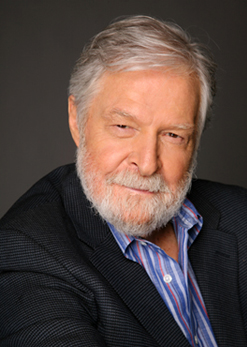|
News
May 8, 2024
Bill Holman, Grammy-winning Jazz Composer and Arranger, Dies at 96
Bill Holman, a Grammy Award-winning jazz arranger and composer who helped shape the big-band music of Stan Kenton and Doc Severinsen’s “Tonight Show” orchestra and wrote orchestrations for singers such as Peggy Lee, Tony Bennett and Natalie Cole, died May 6 at his home in Los Angeles. He was 96. He had chronic obstructive pulmonary disease and other ailments, said his stepdaughter, Kathryn King. Mr. Holman served in the Navy during World War II and studied engineering before launching his music career in his 20s. A skilled tenor saxophonist who played on dozens of recordings, he made his greatest mark as an arranger and composer of tunes for jazz big bands. He first gained notice in the early 1950s after joining Kenton’s band, a group renowned for its soaring brass and lofty ambition blending the grandeur of classical music with the sizzle of jazz. Mr. Holman’s bouncy, rhythmically nimble style didn’t always fit with Kenton’s approach, but he soon became one of the bandleader’s top arrangers, producing orchestrations, or “charts,” that helped define the bold Kenton sound. ADVERTISING
With Kenton, Mr. Holman showed a knack for taking familiar standards, such as “Stompin’ at the Savoy,” “Stella by Starlight” and “What’s New?” and reworking them with daring new rhythms, harmonic complexity and intertwining melodies that made them sound modern and fresh. He composed the tense, neo-baroque “Invention for Guitar and Trumpet,” which became one of Kenton’s most recognized numbers and was featured in the 1955 film “Blackboard Jungle,” with Sidney Poitier and Glenn Ford. Kenton’s acclaimed 1955 album “Contemporary Concepts” included six tunes arranged by Mr. Holman. “All that music came straight from the heart,” Mr. Holman said in a 2008 interview with music writer Marc Myers for his website JazzWax.com. “As you get older, you get wiser and along the way you lose your innocence. When you’re young, you don’t have the smarts to get cute.” By the time “Contemporary Concepts” came out, Mr. Holman and Kenton had already parted ways. Kenton liked a structured sound, and Mr. Holman preferred a style of music rooted in dance rhythms and improvisation. “What I like to capture,” he told musician and writer Ted Gioia for his 1992 book “West Coast Jazz,” “is a real jazz spirit — so that no matter how much is written down, the music should have all the feeling of improvisation.” Mr. Holman’s musical inspirations included the Count Basie band, which he had listened to on the radio while growing up, the cool-jazz arrangements of Gerry Mulligan and, somewhat unexpectedly, the string quartets of Bela Bartok.
He released three big band albums as a leader in the 1950s and 1960s and contributed works to other groups, including a Grammy-nominated 1967 arrangement of the Beatles’ “Norwegian Wood” for drummer Buddy Rich. As jazz lost popularity in the next few years, Mr. Holman turned to other styles, preparing pop arrangements for the Association and the Fifth Dimension. He contributed to television and film productions but longed to return to jazz. “I decided not to go after [film] work where you write a little Mozart, a little Gay ’90s, some rock ’n’ roll here,” he told the Los Angeles Times in 1991. “Instead I stuck with my music.”
His family had no record player, and the only source of music for young Willis — the name his friends and family knew him by throughout his life — was the radio. Mr. Holman began playing clarinet in junior high school before switching to the saxophone. While serving in the Navy, he studied engineering at the University of Colorado and later for one semester at the UCLA. He then used the GI Bill to attend the now-defunct Westlake College of Music, where he studied with Russ Garcia, a distinguished musical arranger. After graduating in 1950, he played saxophone in the big band of Charlie Barnet and began to write arrangements. He joined Kenton in 1952.
Working with his own group, Mr. Holman received a Grammy in 1996 for best instrumental composition for his tune “A View From the Side,” and another in 1998 for his arrangement of Thelonious Monk’s “Straight, No Chaser.” In 2008, Mr. Holman wrote arrangements for a Christmas album by Bennett, who died last year at 96, and was named a Jazz Master of the National Endowment for the Arts in 2010.
Mr. Holman last led his big band in a performance a year ago. He continued to work on new musical projects until shortly before his death. “Writing music and arranging never gets easy,” he said in 2008. “I’ve had students ask me, ‘How long does it take before it gets easy?’ I tell them, ‘Never.’” See Related:
|


 Back to List
Back to List